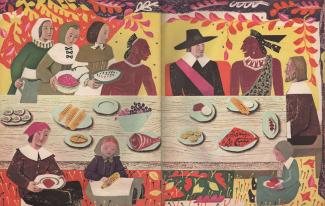The problem with the story told in that book—which is told in many classrooms as well as family homes—is that it is not accurate. Thanksgiving is not a tidy story about food, friendship, and friendly Indians that graciously fade into the background in favor of pilgrims and colonists. The real history is a difficult and complex story about conflict, violence, and colonialism.
In that blog post, I suggest that instead of continuing to tell a story marked by "fabrications, misrepresentations, and racist tropes," we instead teach about Thanksgiving using a different starting point, that of the people who were already here when the Mayflower Separatists arrived from England: the native Wampanoag, and other nations that encountered Europeans.
So we have a new starting point. But where do we go from here? Or rather, are there books and resources that we can use to tell a more accurate story of Thanksgiving? Yes, there are!
In this blog post, I will be highlighting several books (all available in our collection) and resources available online. Teachers can use these to create lesson plans appropriate for younger children, or scale them up for older school-age students.
I will also share other books that shift the focus away from "Pilgrims and Indians" to more culturally responsive themes: thankfulness and gratitude, harvest time and the changing seasons, gathering with loved ones, and how food gets to our tables. Many of these books are by Native creators, centering Native stories and perspectives. These books deserve a place in your classroom and your bookshelf not just in November, but all year long.






